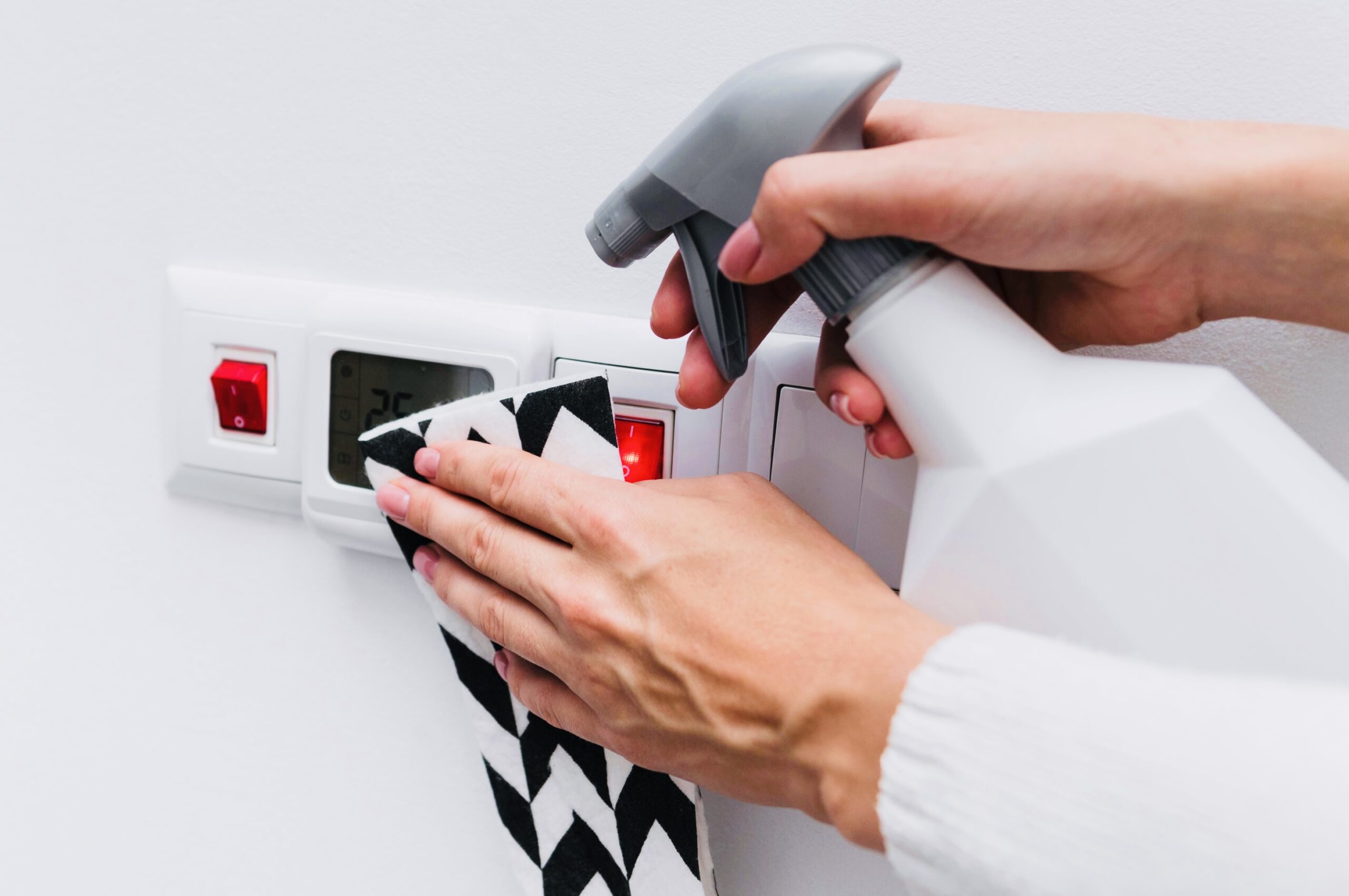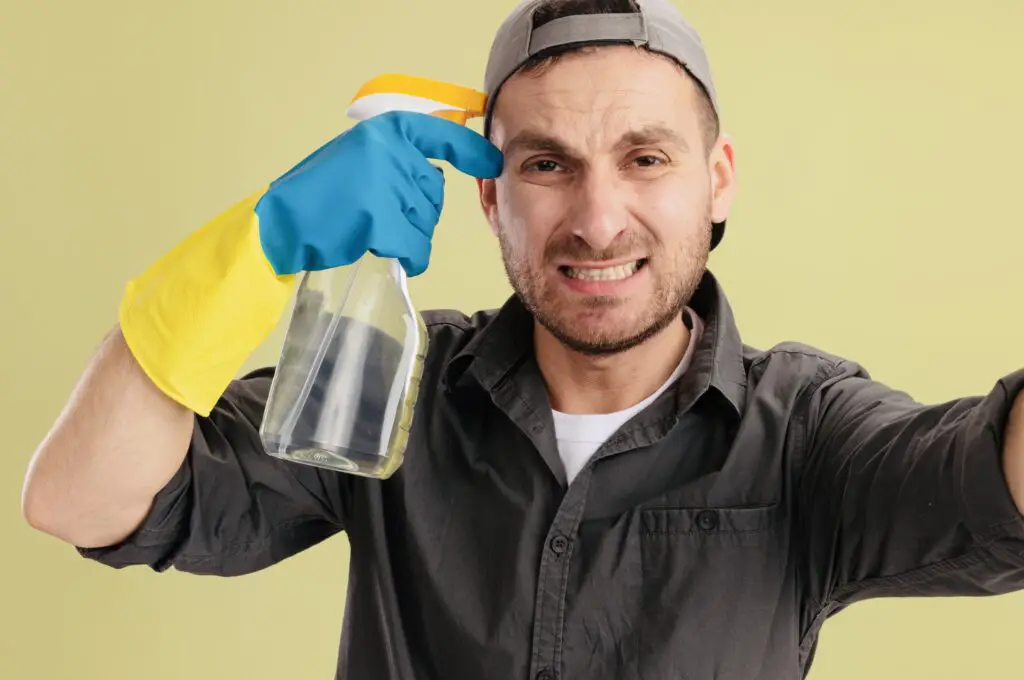Gentle Techniques for Removing Paint from Plastic Surfaces Without Damage
Painting plastic surfaces can enhance their appearance, but removing paint from plastic without causing damage can be a delicate process. So, How To Remove Paint From Plastic Without Damaging?

Whether dealing with accidental splatters or attempting to restore a plastic item, employing the proper techniques is crucial. This article will explore various methods of How To Remove Paint From Plastic Without Damaging for safely removing paint from plastic surfaces without compromising integrity.
Precautions When Removing Paint from Plastic Without Damaging
- Test in a Small Area: Before applying any paint removal method, test it on a small, inconspicuous area of the plastic to ensure compatibility and to observe any adverse reactions.
- Identify Plastic Type: Know the type of plastic you’re dealing with, as different plastics have varying levels of resistance to solvents and abrasives. Refer to product labels or markings for identification.
- Use Protective Gear: Wear gloves and eye protection to shield yourself from chemicals and potential splatters. Work in a well-ventilated area to minimize exposure to fumes.
- Start with Gentle Methods: Use mild solutions like soap and water or rubbing alcohol. Only progress to more robust methods if necessary, and avoid using harsh chemicals unnecessarily.
- Avoid Excessive Force: Patience is vital. Do not use excessive force, especially with abrasive materials or tools, as this can lead to scratches or damage to the plastic surface.
- Follow Product Instructions: If using commercial paint removers or solvents, adhere strictly to the product’s instructions. Different products have specific application times and recommended usage guidelines.
- Protect Surrounding Areas: When using liquid solutions, protect surrounding areas that may be sensitive to the paint removal method. Cover nearby surfaces or items with plastic sheeting or cloth.
- Use Plastic Razor Blades: If using a scraper or razor blade, ensure it is made of plastic to minimize the risk of scratching. Hold the tool at a low angle to the surface to prevent damage.
- Clean Thoroughly After Removal: After successfully removing the paint, clean the plastic surface thoroughly to eliminate any residue from the paint removal process. This ensures a clean finish.
- Be Cautious with Heat: Avoid using heat guns or other heat sources on plastic surfaces, as excessive heat can deform or damage the plastic. Stick to gentle chemical or mechanical methods.
- Dispose of Waste Properly: Dispose of used materials, such as cloths or cotton swabs soaked in paint remover, according to local regulations. Some products may be considered hazardous waste.
- Seek Professional Advice if Unsure: If you are still determining the type of plastic, the paint, or the appropriate removal method, seek advice from professionals specializing in plastic restoration.
Remember, taking precautions ensures a safe and effective paint removal process while preserving the integrity of the plastic surface. Always prioritize safety and follow best practices to achieve the desired results without causing damage.
How To Remove Paint From Plastic Without Damaging: Step By Step Guide
Assessing the Paint Type
Before diving into removal methods, identify the type of paint on the plastic. Water-based paints are generally easier to remove than oil-based ones. Check the paint can or product information for details. This initial step ensures you choose an appropriate removal method for the specific type of paint.
Soap and Water
For water-based paints, start with a mild solution of soap and water. Gently scrub the painted area with a soft cloth or sponge. This method is particularly effective for fresh paint stains. Avoid using abrasive materials that could scratch the plastic.
Rubbing Alcohol
Rubbing alcohol is a versatile solution for removing paint from plastic. Dampen a cloth with rubbing alcohol and gently rub the painted surface. The alcohol breaks down the paint without harming the plastic. Repeat the process as needed, and be cautious not to use excessive force.
Acetone or Nail Polish Remover
For more stubborn paint, acetone or nail polish remover can be effective. Apply a small amount to a cloth and carefully rub the painted area. However, exercise caution, as acetone can weaken certain types of plastics. Test a small, inconspicuous area first and avoid prolonged exposure.
Olive Oil
Olive oil can be an unexpected ally in paint removal. Apply a generous amount of olive oil to the painted surface and let it sit for several hours. The oil can help soften the paint, making it easier to scrape off gently. Wipe away any residue with a clean cloth.
Plastic Razor Blade or Scraper
A plastic razor blade or scraper can be used cautiously for thicker paint layers. Hold the blade at a low angle to avoid scratching the plastic. Gently scrape away the paint, periodically wiping the blade to prevent the accumulation of paint residue.

Baking Soda Paste
Create a paste using baking soda and water, and apply it to the painted plastic. Let it sit for a few hours before gently scrubbing it with a soft brush or cloth. The mild abrasive nature of baking soda helps lift the paint without causing damage to the plastic.
Commercial Paint Removers
Consider using a commercial paint remover designed explicitly for plastics if all else fails. Follow the product instructions carefully, and ensure the remover suits the type of plastic you’re working with.
Frequently Asked Questions: How To Remove Paint From Plastic Without Damaging
Q1: Can I use any paint removal method on all types of plastic?
A1: No, it’s crucial to consider the type of plastic before choosing a paint removal method. Some plastics may be sensitive to certain solvents or abrasives. Always test the preferred method on a small, inconspicuous area first.
Q2: Is there a specific order to try the paint removal methods mentioned in the article?
A2: Start with the least aggressive methods, such as soap and water or rubbing alcohol. If these don’t work, gradually progress to more robust solutions like acetone or commercial paint removers, testing each method in a discrete area.
Q3: Can I use a metal razor blade or scraper to remove paint from plastic?
A3: Using metal blades is not recommended, as they can scratch and damage the plastic. Opt for plastic razor blades or scrapers to minimize the risk of surface abrasions.
Q4: Will acetone damage all types of plastic?
A4: Acetone can weaken certain plastics, so testing it on a small area is crucial. If unsure, consider using milder alternatives like rubbing alcohol or commercial paint removers formulated for plastics.
Q5: Can I speed up the paint removal process by using excessive force?
A5: Excessive force can lead to scratches or damage to the plastic. Patience is vital when removing paint; allow the chosen method time to work, and repeat the process if necessary.
Q6: How do I remove paint from intricate or detailed plastic surfaces?
A6: Consider using a soft brush or cotton swab along with a gentle paint removal method for intricate details. Take your time to ensure thorough coverage without damaging the delicate areas.
Q7: Is there a way to prevent paint from sticking to plastic surfaces in the first place?
A7: Proper surface preparation is essential. Clean the plastic thoroughly, use a suitable primer, and follow the paint manufacturer’s recommendations for optimal adhesion. Applying thin, even coats also helps prevent paint from peeling or chipping.
Q8: Can I repaint the plastic after removing the old paint?
A8: Yes, once the plastic is clean and dry, you can repaint it. Follow the recommended steps for applying paint on plastic, ensuring proper surface preparation, and using compatible paint and primer.
Q9: Can I use the same methods to remove paint from painted plastic surfaces?
A9: The methods mentioned can effectively remove paint from previously painted plastic surfaces. Adjust the technique based on the type of paint and follow the steps outlined in the article.
Q10: How do I know when it’s time to seek professional help for paint removal on plastic?
A10: If you need more clarification about the type of plastic or the most suitable removal method, or if you encounter difficulties, it’s advisable to consult with professionals who specialize in plastic restoration. They can provide guidance based on their expertise.
Conclusion
Successfully removing paint from plastic requires patience and the proper techniques. By identifying the paint type and choosing a method that suits the specific plastic, you can restore surfaces without causing damage. Experiment with these gentle approaches, constantly testing in inconspicuous areas first, to achieve the best results in paint removal from plastic items.
Happy Painting!

